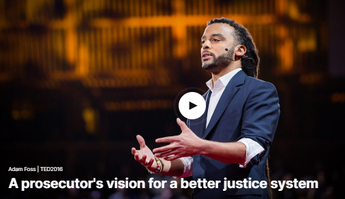Juvenile Justice Resources

Kirwan Institute Bi-weekly Forums Fall 2021
Fiction and Fact About Critical Race Theory
September 2021
Hosted by: Harvey J. Graff, PhD
On Thursday, September 9 the Kirwan Institute kicked off the Fall 2021 Virtual Forum Series with a presentation by Harvey Graff, PhD on Critical Race Theory. Dr. Graff will address the national discussion and make the distinction between truth and speculation. About Harvey J. Graff, PhD : In retirement, Graff has turned his knowledge and skills to "public education." He publishes Letters to Editors and OpEds in newspapers across the country (in the Dispatch for example on critical race theory and DeWine's covid response, and in Columbus Underground on Columbus' identity crisis and its media). He also advises reporters and NPR stations across the US; counsels elected representatives in Ohio and Washington; and fact-check newspapers via online comment sites.
Fiction and Fact About Critical Race Theory
September 2021
Hosted by: Harvey J. Graff, PhD
On Thursday, September 9 the Kirwan Institute kicked off the Fall 2021 Virtual Forum Series with a presentation by Harvey Graff, PhD on Critical Race Theory. Dr. Graff will address the national discussion and make the distinction between truth and speculation. About Harvey J. Graff, PhD : In retirement, Graff has turned his knowledge and skills to "public education." He publishes Letters to Editors and OpEds in newspapers across the country (in the Dispatch for example on critical race theory and DeWine's covid response, and in Columbus Underground on Columbus' identity crisis and its media). He also advises reporters and NPR stations across the US; counsels elected representatives in Ohio and Washington; and fact-check newspapers via online comment sites.

Indiana Youth Institute
Data Report: Youth in the Justice System March 2021 Understanding the Justice System for Youth Historical and current school discipline practices and polices continue to disproportionately push some kids of color out of the classroom and into the juvenile justice system, leading to severe long-term outcomes in education, economic well-being, and health. Even a short time in justice system can have profound and potentially lifelong negative consequences for the young people involved. Locked detention can cause young people serious harm, both immediate and long-term. Harsh conditions and intensive supervision inside the facilities can also intensify symptoms for youth with serious mental health problems or a history of trauma or abuse. Involvement in the justice system disrupts a young person’s schooling and makes it more likely that they will fail classes or dropout. When compared to peers who are not detained, youth who spent time in custody were less likely to complete high school and also less likely to find employment |
| ||||||
|
Further Evidence of Racial Disparities in Drug Court Outcomes: Enhancing Service-Delivery to Reduce Criminal Recidivism Rates for Non-White Participants
John Robert Gallagher, Elizabeth A. Wahler & Elyse Lefebvre Abstract: The first drug court began in 1989, and since their inception, they have expanded to over 3,000 in the United States and United States territories. The long-term goal of drug courts is to reduce criminal recidivism rates for nonviolent offenders who have substance use disorders. This study adds to the literature by using secondary data to compare criminal recidivism rates between drug court participants (n = 163) and probationers who had diagnosed substance use disorders and arrests that were eligible for drug court but they did probation instead (n = 185). Criminal recidivism was measured up to 36 months post drug court/probation discharge, which provides a more accurate assessment of the long-term effectiveness of drug court. Furthermore, this study identified which drug court participants were most likely to recidivate. Drug court participants were less likely to recidivate than the probation group. However, differences between the two groups may have contributed to the difference in criminal recidivism rates and also suggest that screening criteria may exclude some non-White participants from drug court. Non-white participants were more likely to recidivate than their White counterparts. Implications for future research and drug court practice are discussed, focusing on enhancing the service-delivery of education and employment opportunities to non-White drug court participants. https://doi.org/10.1080/01488376.2019.1575325 |
| ||||||
|
Grand Challenges for Social Work
Achieving Equal Opportunity and Justice in Juvenile Justice Bo-Kyung Elizabeth Kim, Susan McCarter, &Patricia Logan-Greene In order to achieve equal opportunity and justice, our nation’s most vulnerable youth must not bear a disproportionate burden of justice system involvement. In 2016, nearly one million youth in the United States were arrested (Hockenberry & Puzzanchera,2018). These youth are often those growing up with neglect, maltreatment, and abuse; living without financial security; facing mental, emotional, and behavioral health problems; and experiencing discrimination for various reasons not limited to race, ethnicity, culture, gender identity, and sexual orientation. Moreover, once they become justice-involved, they face diminished outcomes in development, education, and employment, as well as an increased likelihood of continued system involvement. Therefore, we propose rebuilding social work’s commitment to juvenile justice by capitalizing on recent policy and systems change, cross-sector collaboration, and evidence-based interventions. To transform the juvenile justice system over the next decade, we propose five actionable goals for social work practice, policy, and research to dismantle inequity and injustice and foster the full social, civic, economic, and political integration of justice-involved youth. |
| ||||||
|
Community-engaged Research (CER) as the Avenue to Promoting Well-being and Recovery in Drug Court
John R. Gallagher, Anne Nordberg, Raychel Minasian, Sydney Szymanowski, Jesse Carlton, Kristin Fee, Jane Woodward Miller, John Horsley And Tara Paiano Abstract: Drug courts are an alternative to incarceration for individuals who have substance use disorders and have been arrested for drug-related crimes (e.g. possession of a controlled substance). The first drug court began in 1989 in Florida and it is estimated that there are over 3,000 drug courts now operating throughout the United States. This community-engaged research (CER) evaluated the St. Joseph County (Indiana) drug court by identifying who was most likely to graduate, who was most likely to recidivate, and whether drug court or probation was more effective at reducing criminal recidivism. Furthermore, although drug courts are found in many communities, research rarely describes the process used to develop and implement. Therefore, this article also highlights the collaborative process used in this drug court evaluation. The findings from this study suggest that the St. Joseph County (Indiana) drug court is an effective program at reducing criminal recidivism and a valuable resource for individuals who have substance use disorders, the community, and other stakeholders. Drug court participants were less likely to recidivate than probationers, and a lower recidivism rate clearly equates to many benefits to the community. The article concludes with community-based implications, such as starting recovery support groups that are welcoming to individuals who receive medication-assisted treatment (MAT), marketing drug court to racial and ethnic minorities to increase their representation in the program, and disseminating research findings throughout the community via local news stories, podcasts, and public lectures. |
| ||||||
inSoicalWork™Podcast Series
Episode 276 - Dr. John Gallagher: It's all about relationships: Drug Courts - what are they and how do they work? (part 1 of 2)
In the first of a two-part podcast, Dr. John Gallagher discusses his teaching, practice and scholarly activity with drug courts and their outcomes. Beginning with an overview of drug courts and how they work, he introduces a conversation related to racial disparities in outcome studies that he will elaborate on in part two of this podcast.
Episode 276 - Dr. John Gallagher: It's all about relationships: Drug Courts - what are they and how do they work? (part 1 of 2)
In the first of a two-part podcast, Dr. John Gallagher discusses his teaching, practice and scholarly activity with drug courts and their outcomes. Beginning with an overview of drug courts and how they work, he introduces a conversation related to racial disparities in outcome studies that he will elaborate on in part two of this podcast.
inSoicalWork™Podcast Series
Episode 278 - Dr. John Gallagher: It's all about relationships: Drug Courts - what are they and how do they work? (part 2 of 2)
In the second of a two-part podcast, our guest Dr. John Gallagher elaborates on the racial disparities his research is revealing related to drug court outcomes. He describes the four main themes he has identified via qualitative research with African-American drug court participants and recommendations for practice based on this work.
Episode 278 - Dr. John Gallagher: It's all about relationships: Drug Courts - what are they and how do they work? (part 2 of 2)
In the second of a two-part podcast, our guest Dr. John Gallagher elaborates on the racial disparities his research is revealing related to drug court outcomes. He describes the four main themes he has identified via qualitative research with African-American drug court participants and recommendations for practice based on this work.

Ted Talk - Adam Foss
When a kid commits a crime, the US justice system has a choice: prosecute to the full extent of the law, or take a step back and ask if saddling young people with criminal records is the right thing to do every time. In this searching talk, Adam Foss, a prosecutor with the Suffolk County District Attorney's Office in Boston, makes his case for a reformed justice system that replaces wrath with opportunity, changing people's lives for the better instead of ruining them
When a kid commits a crime, the US justice system has a choice: prosecute to the full extent of the law, or take a step back and ask if saddling young people with criminal records is the right thing to do every time. In this searching talk, Adam Foss, a prosecutor with the Suffolk County District Attorney's Office in Boston, makes his case for a reformed justice system that replaces wrath with opportunity, changing people's lives for the better instead of ruining them
Progress to Strengthen the Juvenile Justice and Delinquency Prevention Act
From Child Trends E-Newsletter
This month the Supporting Youth Opportunity and Preventing Delinquency Act of 2016 (H.R. 5963) — a critically important and long overdue update of the major Juvenile Justice law — was passed by the U.S. House of Representatives. The bipartisan bill includes key federal protections for justice-involved youths including a prohibition on incarceration for status offenses, requirements for removal of youths from adult jails and lock-ups and requirements to address the disproportionate number of youths of color in contact with the juvenile justice system. The bill includes new tools to prevent delinquency, curb gang involvement, and keep more youths home. The bill also bans the shackling of pregnant girls and takes steps to improve educational outcomes for detained youths. When the Senate returns after the elections, it must approve the Senate’s bipartisan reauthorization bill which includes similar protections will be waiting for action.
From Child Trends E-Newsletter
This month the Supporting Youth Opportunity and Preventing Delinquency Act of 2016 (H.R. 5963) — a critically important and long overdue update of the major Juvenile Justice law — was passed by the U.S. House of Representatives. The bipartisan bill includes key federal protections for justice-involved youths including a prohibition on incarceration for status offenses, requirements for removal of youths from adult jails and lock-ups and requirements to address the disproportionate number of youths of color in contact with the juvenile justice system. The bill includes new tools to prevent delinquency, curb gang involvement, and keep more youths home. The bill also bans the shackling of pregnant girls and takes steps to improve educational outcomes for detained youths. When the Senate returns after the elections, it must approve the Senate’s bipartisan reauthorization bill which includes similar protections will be waiting for action.


